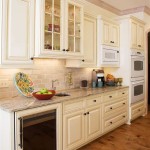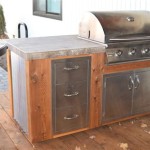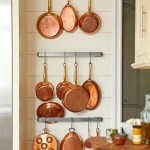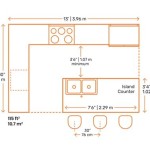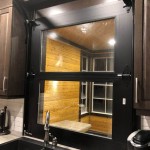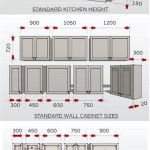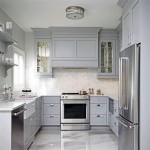Storing Pots And Pans In A Small Kitchen: Maximizing Space and Efficiency
Small kitchens present unique challenges when it comes to storage, particularly for bulky items like pots and pans. Efficiently storing these essential cooking tools is crucial for maintaining a functional and organized kitchen. Strategic planning and innovative storage solutions can transform a cramped cooking space into a more manageable and enjoyable environment. This article explores various methods and techniques for optimizing pot and pan storage in small kitchens, focusing on practicality and space-saving strategies.
Vertical Storage Solutions
Vertical space is often underutilized in small kitchens. Implementing vertical storage solutions can significantly increase the capacity for storing pots and pans without occupying valuable countertop or cabinet space. Options range from simple to more elaborate installations, catering to different needs and budgets.
One common approach is the use of pot racks. These racks can be mounted on the ceiling or wall, providing a convenient and visually appealing way to store pots and pans. Ceiling-mounted racks are particularly effective for maximizing space above islands or peninsulas. Wall-mounted racks are suitable for kitchens with limited ceiling space or those with lower ceilings. The open design of pot racks allows for easy access to cookware and promotes air circulation, preventing moisture buildup. When selecting a pot rack, consider the weight capacity and the size of the cookware to be stored. Heavy-duty racks constructed from durable materials like stainless steel or wrought iron are ideal for supporting heavier pots and pans.
Another vertical storage option is the use of rolling carts or freestanding shelving units. These mobile units can be positioned in unused corners or along walls, providing additional storage space without requiring permanent installation. Look for carts with adjustable shelves to accommodate pots and pans of varying sizes. Castor wheels allow for easy movement, making it convenient to access cookware when needed. Shelving units can be customized with hooks and racks to further optimize storage. Ensure that the chosen unit is sturdy and stable, especially when loaded with heavy items.
Wall-mounted organizers, such as pegboards or slatwall systems, offer a versatile and customizable storage solution. These systems allow for the arrangement of hooks, shelves, and containers to accommodate a variety of cookware. Pegboards are particularly effective for storing items like lids and utensils, while slatwall systems can support heavier pots and pans. The modular design of these systems allows for easy rearrangement and adaptation as storage needs change. When installing a wall-mounted organizer, consider the weight capacity of the wall and use appropriate mounting hardware to ensure stability.
Pull-out organizers within existing cabinets can also contribute to vertical storage. These systems typically consist of tiered shelves or racks that slide out from within the cabinet, providing easy access to pots and pans stored at the back. The pull-out mechanism eliminates the need to reach deep into the cabinet, making it easier to retrieve the desired cookware. These organizers are particularly useful for storing large or heavy items that would be difficult to lift from a low shelf. When selecting a pull-out organizer, measure the interior of the cabinet carefully to ensure a proper fit.
Optimizing Cabinet Space
Maximizing the use of existing cabinet space is essential in a small kitchen. Implementing organizational strategies and utilizing specialized storage solutions can significantly increase the capacity of cabinets for storing pots and pans.
One effective technique is to use dividers or organizers within cabinets. These devices create compartments that separate pots and pans, preventing them from nesting together and maximizing the available space. Dividers can be made from various materials, such as wood, metal, or plastic, and can be adjusted to accommodate different sizes of cookware. They help to keep pots and pans organized and prevent them from scratching or damaging each other. Adjustable dividers offer flexibility and can be customized to suit specific storage needs.
Lid organizers are another essential component of efficient cabinet storage. Lids can be particularly challenging to store due to their awkward shape and tendency to fall over. Lid organizers provide a dedicated space for lids, preventing them from cluttering up the cabinet and making it easier to find the desired lid. Various types of lid organizers are available, including in-cabinet organizers, door-mounted organizers, and freestanding organizers. The choice of organizer will depend on the available space and the number of lids to be stored.
Stacking cookware efficiently is crucial for maximizing cabinet space. When stacking pots and pans, nest smaller items inside larger ones to minimize the overall footprint. Protect the surfaces of cookware by placing pot protectors or felt pads between layers. These protectors prevent scratches and damage caused by metal-on-metal contact. Avoid stacking fragile or delicate items, such as ceramic cookware, as they may be susceptible to breakage. Store heavier items at the bottom of the stack to prevent them from toppling over.
Utilizing the back of cabinet doors can provide additional storage space for lids, small pots, or utensils. Door-mounted organizers, such as spice racks or wire baskets, can be attached to the inside of cabinet doors, providing a convenient and accessible storage solution. These organizers are particularly useful for storing frequently used items, allowing for easy access without having to rummage through the entire cabinet. Ensure that the door-mounted organizer is securely attached to the door and does not interfere with the closing of the cabinet.
Consider installing pull-down shelving systems within upper cabinets. These systems allow for easy access to items stored on higher shelves, making it easier to reach pots and pans without having to use a step stool. Pull-down shelves are particularly useful for individuals with limited mobility or those who have difficulty reaching high shelves. These systems typically consist of a spring-loaded mechanism that lowers the shelf down to a more accessible level. When selecting a pull-down shelving system, consider the weight capacity and the size of the cookware to be stored.
Creative and Alternative Storage Solutions
Beyond traditional storage methods, various creative and alternative solutions can be employed to store pots and pans in a small kitchen. These options often involve repurposing existing spaces or utilizing unconventional storage locations.
Using drawer dividers can help to organize pots and pans stored in drawers. While drawers are often used for storing utensils and smaller items, they can also be adapted for storing cookware. Drawer dividers create compartments that separate pots and pans, preventing them from shifting and maximizing the available space. These dividers can be made from various materials, such as wood, plastic, or metal, and can be customized to fit the dimensions of the drawer. They help to keep cookware organized and prevent damage caused by items sliding around.
Repurposing existing furniture or storage containers can provide additional storage space for pots and pans. For example, an old dresser or chest of drawers can be converted into a storage unit for cookware. The drawers can be used to store pots and pans, while the top surface can be used for countertop appliances or other kitchen items. Similarly, large storage bins or containers can be used to store pots and pans in a pantry or closet. These containers should be durable and easy to clean, and they should be clearly labeled to identify the contents.
Utilizing the space under the sink can provide a hidden storage location for pots and pans. Install a pull-out organizer or shelving unit under the sink to maximize the available space. Consider covering the pots and pans with a waterproof cover or liner to protect them from moisture and spills. This space may be particularly suitable for storing less frequently used cookware.
Exploring off-site storage options can free up valuable space in a small kitchen. If space is extremely limited, consider storing less frequently used pots and pans in a basement, garage, or storage unit. This option is particularly suitable for seasonal cookware, such as holiday baking pans or large stockpots used only for occasional events. Ensure that the stored cookware is properly cleaned and protected from dust and moisture.
Implementing these storage solutions requires careful consideration of individual needs and kitchen layout. The key to success lies in prioritizing functionality and accessibility, ensuring that the most frequently used cookware is readily available while maximizing the available space. Regularly decluttering and assessing storage needs will further optimize the organization of pots and pans in a small kitchen.

The Small Kitchen Storage Solution For Pots Pans Live Simply Method

Kitchen Ideas For Pots And Pans

How To Organize Pots And Pans Smart Ways Cooking Tools

Simple Functional Ways To Decorate A Hanging Pot Rack Open Doors Hearts

8 Best Pots And Pans Organizers 2025 Storage Hangers Racks More

15 Creative Ideas To Organize Pots And Pans Storage On Your Kitchen Shelterness

Top 5 Recommended Kitchen Cabinets For Organizing Pots Pans

Kitchen Organization Solutions For Small Kitchens Pins And Procrastination

Organizing Pots And Pans In A Corner Cabinet Smallish Home

18 Brilliant Pots And Pans Storage Ideas For Your Kitchen

